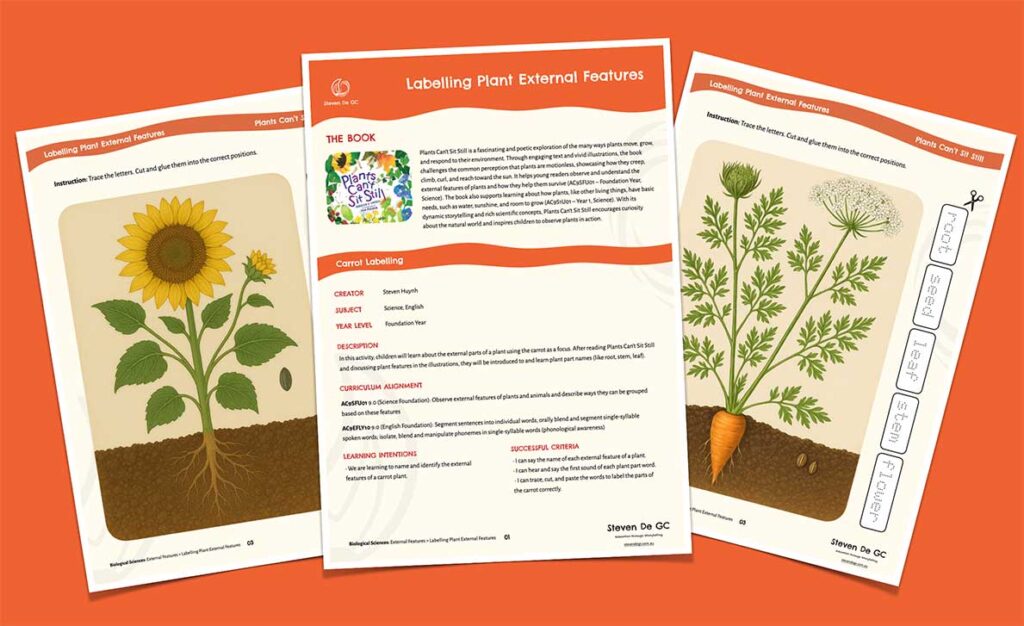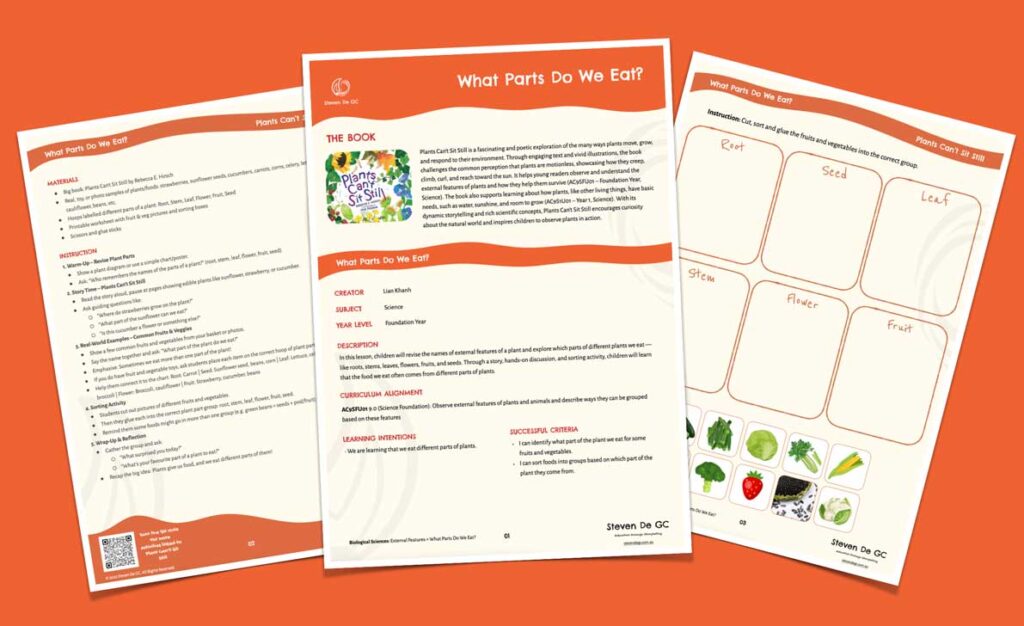Do plants really move? Absolutely! You might be surprised by all ways plants can move. Plants might not pick up their roots and walk away, but they definitely don’t sit still! Discover the many ways plants (and their seeds) move. Whether it’s a sunflower, a Venus flytrap, or an exotic plant like an exploding cucumber, this fascinating picture book shows just how excitingly active plants really are.

Plants Can’t Sit Still
(9781467780315)
Written by Rebecca Hirsh
Illustrated by Mia Posada
Published by Millbrook Picture Books
Theme/topic: Basic needs and External features
Plants Can’t Sit Still is a fascinating and poetic exploration of the many ways plants move, grow, and respond to their environment. Through engaging text and vivid illustrations, the book challenges the common perception that plants are motionless, showcasing how they creep, climb, curl, and reach toward the sun. It helps young readers observe and understand the external features of plants and how they help them survive (AC9SFU01 – Foundation Year, Science). The book also supports learning about how plants, like other living things, have basic needs, such as water, sunshine, and room to grow (AC9S1U01 – Year 1, Science). With its dynamic storytelling and rich scientific concepts, Plants Can’t Sit Still encourages curiosity about the natural world and inspires children to observe plants in action.
Curriculum Alignment:
- These AC codes are suggested purely based on the book’s content and are provided for reference only.
AC9S1U01 9.0 (Science Year 1): Identify the basic needs of plants and animals, including air, water, food or shelter, and describe how the places they live meet those needs
• identifying the places where plants and animals live, including in our homes, local areas such as ponds, national parks, gardens or zoos
• identifying what they do to look after pets or plants at home and grouping these activities
• identifying and comparing the needs of a variety of plants and animals, including humans, based on their own experiences
• creating dioramas of a place a plant or animal lives, and identifying the features that enable it to meet its needs
• recognising how First Nations Australians care for living things
• exploring why caring for plants and animals is important including as sources of food and fibre
AC9SFU01 9.0 (Science Foundation): Observe external features of plants and animals and describe ways they can be grouped based on these features
• observing fruits and vegetables and identifying them as parts of plants such as roots, flowers, fruits or leaves
• recognising humans as animals, describing external features of humans and exploring similarities and differences compared with other animals
• using magnifying glasses or digital cameras to observe and identify external features of plants including seeds, flowers, fruits and roots, or of animals such as eyes, body covering, legs and wings
• sorting collections of model animals and explaining different grouping strategies
• recognising First Nations Australians’ use of observable features to group living things
• exploring how First Nations Australians’ observations of external features of living things are replicated in traditional dance




